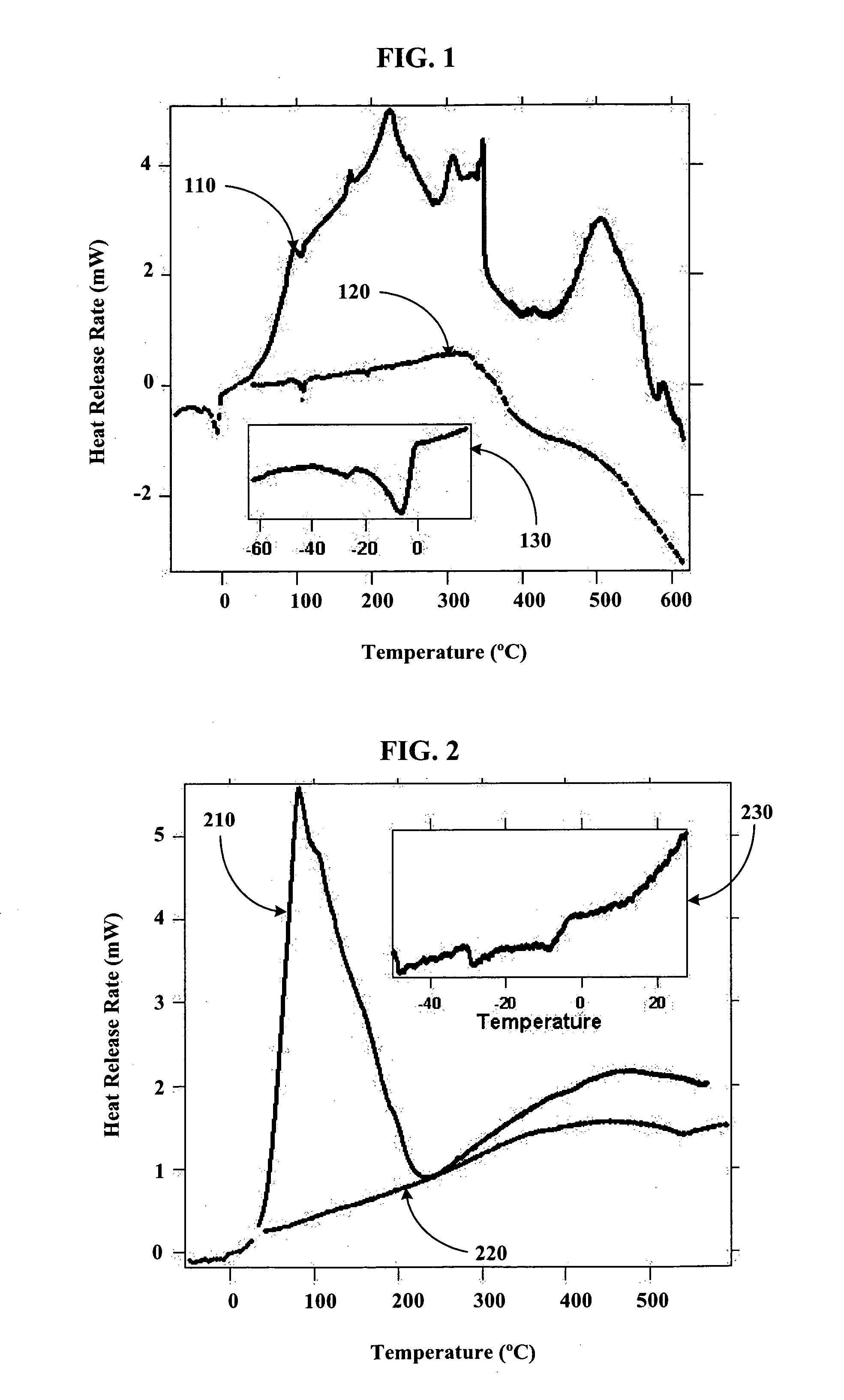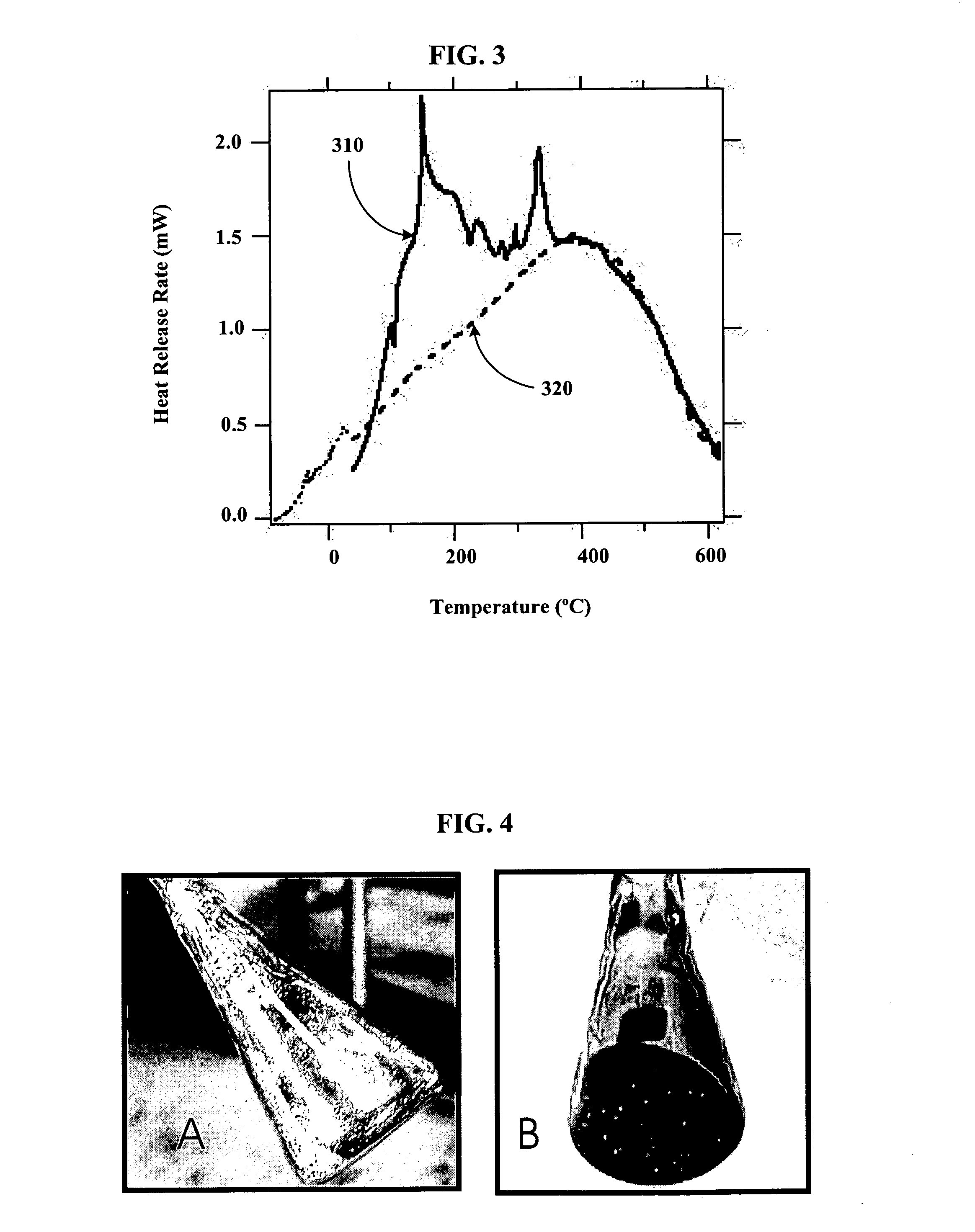Silica gel compositions containing alkali metals and alkali metal alloy
a technology of alkali metals and compositions, applied in the field ofsilica gel compositions, can solve the problems of high sodium absorbed by the zeolite composition, spontaneous fire of alkali metals and their alloys, and severe restrictions on their shipment and us
- Summary
- Abstract
- Description
- Claims
- Application Information
AI Technical Summary
Problems solved by technology
Method used
Image
Examples
example 1
[0077] An exemplary silica gel, Davisil 30 to 50 mesh, was obtained from Grace-Davison as a free-flowing powder that is listed as 99+ percent SiO2. However, it contains large amounts of gaseous material, probably water and air. In order to remove the gaseous material the silica gel was heated under vacuum in an evacuable Erlenmeyer flask, first with a hot air dryer and then with a torch. The estimated temperature reached approximately 300° C. As discussed above, silica gel can be out-gassed more easily (with passivation of active sites) by heating the material to 600° C. or hotter in air (calcination).
example 2
[0078] One significant feature of the Group 1 metal / silica gel compositions of the invention is their ability to produce pure hydrogen gas quantitatively upon addition to water. The “reducing power” of the Group 1 metal / silica gel compositions was determined by adding water to an evacuated sample and collecting hydrogen with a modified Toeppler pump. The reducing power is defined as the weight percent of alkali metal or alloy used that would produce the same amount of hydrogen. This was verified by collecting the hydrogen produced from a known mass of material upon reaction with out-gassed water. The hydrogen was collected in a calibrated pipette using a modified Toeppler pump (mercury filled). The amount of hydrogen produced was generally equivalent to the amount that would have been produced by the metal(s) alone. Such analyses were run on every sample of reduced silica, regardless of the stage of the material. For example, if a 40 wt % sample of NaK in Stage I silica gel produced...
example 3
[0079] Using a stainless steel pan inside of a helium filled glove box, 14 g of outgassed and calcined silica gel was mixed with 9.7 g of Na2K from a Pasteur pipette to create Stage 0 material. The Na2K was added drop wise to various regions of the silica gel coated pan. The drops of alloy wet the silica gel and could be “squashed” with a spatula to aid the alloy inclusion. The product never got warm and appeared to have a very shiny surface indicating free metal on the surface. It appeared that the Na2K was not completely absorbed into the silica gel pores. The sample was then setup for Differential Scanning Calorimetery (DSC) by putting 3.6 mg of the sample into a DSC pan. The DSC was run from ˜−55 to 60° C., held for ten minutes, and then re-run. After, the sample was run to 450° C. twice. The endotherm of melting corresponded to ˜135 J / g metal, which is slightly higher than expected based on metal added. The weighed mass could be off or we could have inhomogeneities in concentra...
PUM
| Property | Measurement | Unit |
|---|---|---|
| temperature | aaaaa | aaaaa |
| temperature | aaaaa | aaaaa |
| temperature | aaaaa | aaaaa |
Abstract
Description
Claims
Application Information
 Login to View More
Login to View More - R&D
- Intellectual Property
- Life Sciences
- Materials
- Tech Scout
- Unparalleled Data Quality
- Higher Quality Content
- 60% Fewer Hallucinations
Browse by: Latest US Patents, China's latest patents, Technical Efficacy Thesaurus, Application Domain, Technology Topic, Popular Technical Reports.
© 2025 PatSnap. All rights reserved.Legal|Privacy policy|Modern Slavery Act Transparency Statement|Sitemap|About US| Contact US: help@patsnap.com



